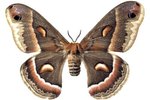Things You'll Need
Glass jars with lids
Soil
Grass
Peat moss
Lightning bugs are also called fireflies. They are related to the beetle family of insects. Males will light up when flying to alert females they are ready for mating. Females will light up from the ground in response to males they want to mate with. If the male lights up often, it has more chances to attract a female. Lightning bugs live up to 4 months, spending most of their life cycle as larvae.
Prepare a several glass jars. Make several holes in each lid for each jar. You should have one jar for each larvae firefly. Once they are adults, they can be together; otherwise, as larvae, the more dominant larvae will eat the others.
Put soft soil inside the jar along with some grass. Make sure that the soil remains moist since larvae live best in soft soil. Spray the soil with water or use peat moss to hold the moisture.
Find lightning bug larvae close to ponds or streams during the night on leaves and the ground. You can also find larvae in piles of leaf litter where soil is moist. Collect only a few at first until you get used to raising lightning bugs.
Place one larvae firefly in one glass jar. Feed the larvae on a daily basis. This could be chopped up earthworms, snails or other insects.
Continue to feed the lightning bugs and keep moist soil in the jar up to 3 months. Lightning bugs remain larvae after hatching from eggs for almost 3 months, and then they pupate into fireflies. Once the lightning bugs begin to fly, place several in one jar so that they can mate. Once the female lays the eggs, then place the lightning bugs into another jar or set them free.
Feed adult lightning bugs. They eat pollen, parts of flowers and other insects. They can also drink water mixed with a drop of honey, which will prolong their life.
Tips
Lightning bug larvae can be found most often during the winter and spring.
Writer Bio
Laura Hageman has written varied articles on real estate to entertainment topics for the past three years. Hageman wrote a romantic comedy novel entitled Her Desire listed on ebookmall.com. She has written for Web sites such as CurrentForeclosures and Triond over the course of 7 years. Hageman holds a Bachelor's degree in Arts.




